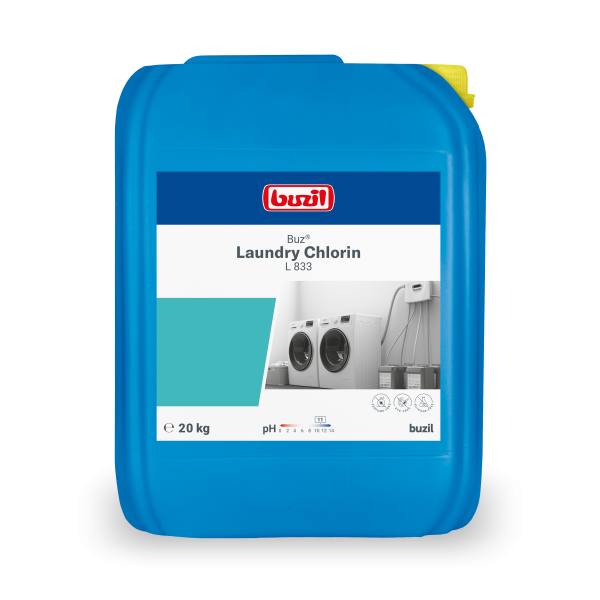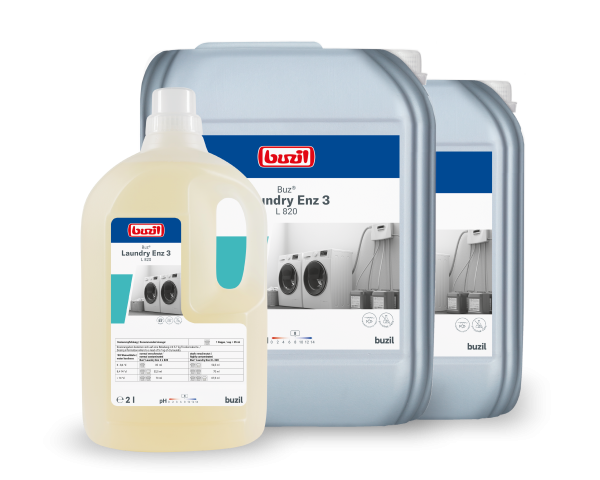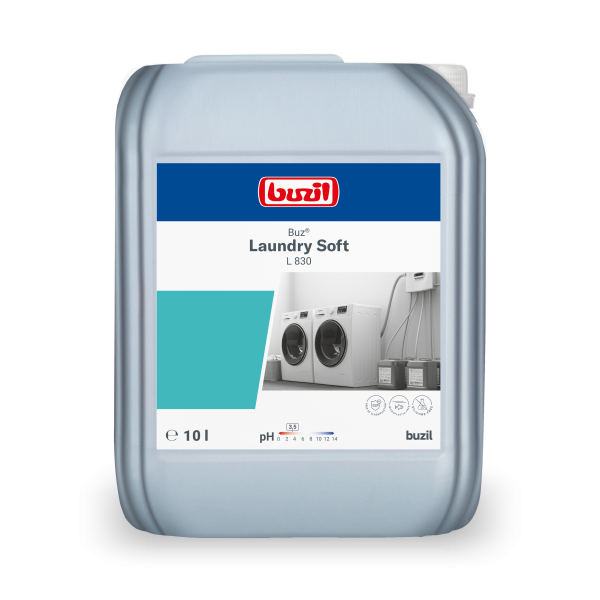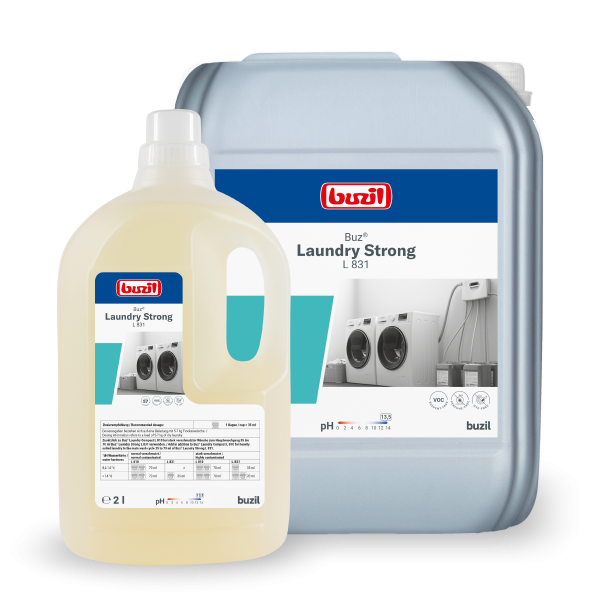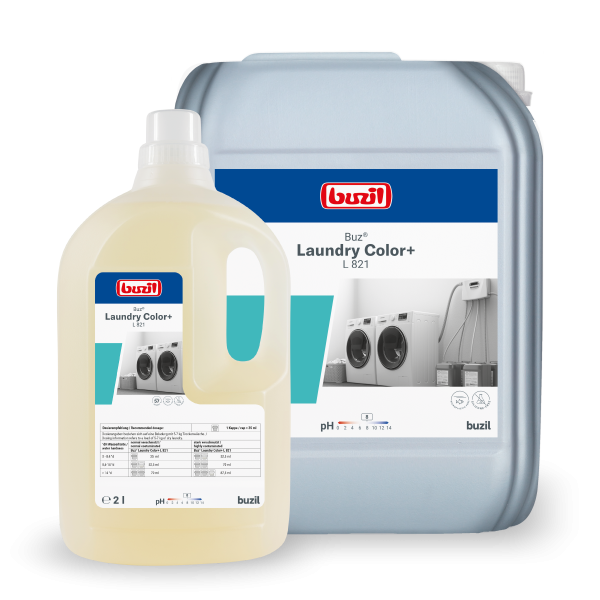Utilization
Soiling
-
Organic / inorganic contamination (grease, oil, protein, starch etc.)
-
Heavy stain load on textiles e.g. blood, starch, protein etc.
Material compatibility
-
Textiles | Cotton
-
Textiles | blended fabric
-
Textiles | synthetic and microfibre
Product Information
- Excellent bleaching effect for brilliant white laundry
- Can be optimally combined with the BUZ® LAUNDRY products
- Powerful removal of stubborn yellowing, colour and mould stains
Area of application
- for the commercial sector
- suitable for decolourising and bleaching chlorine-resistant textiles, e.g. table linen, work coats, kitchen linen, etc.
- not suitable for wool, silk and polyamide
Application and dosage
- For automatic and manual dosing. The recommended dosage depends on the amount of dirt, the water hardness and the load.
-
5 - 15 Millilitre / Kilogramme Dry laundry
- Apply fresh application solutions and consume them within 24 hours at the latest.
Note
- Please observe the washing and care instructions of the textiles.
- Chlorine-containing special product exclusively for application in the washing machine. For decolourizing and bleaching stains and mildew stains from white linen (cotton) and bleachable textiles. The suitability of the textiles must be checked in advance (note, among other things, the laundry symbol △ for bleachable textiles).
- Changes or variations in colour of the product do not impact on the quality. The product image may differ in colour and shape from the original.
- Commercial use only
Sales units
- L833-0020RA: 1 x 20 kg canister
Classification according to CLP
Danger marking
Danger
Hazard information
- H290: May be corrosive to metals.
- H314: Causes severe skin burns and eye damage.
- H400: Very toxic to aquatic life.
- H411: Toxic to aquatic life with long lasting effects.
- EUH031: Contact with acids liberates toxic gas.
Safety instructions
- P273: Avoid release to the environment.
- P280: Wear protective gloves/protective clothing/eye protection/face protection.
- P303+P361+P353: IF ON SKIN (or hair): Take off immediately all contaminated clothing. Rinse skin with water or shower.
- P305+P351+P338: IF IN EYES: Rinse cautiously with water for several minutes. Remove contact lenses, if present and easy to do. Continue rinsing.
- P310: Immediately call a POISON CENTER/doctor.
- P501: Dispose of contents/containers in accordance with local and national regulations.
Download area
- Operating instructions
- Safety Data Sheets
- Technical Data Sheets
- Environmental Information

